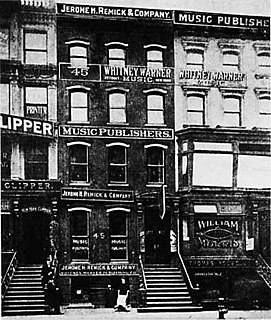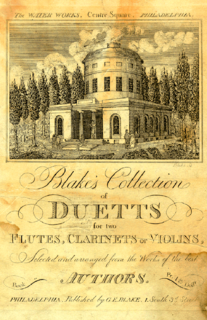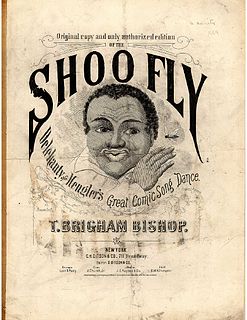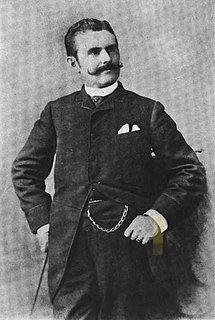
Tin Pan Alley is the name given to a collection of music publishers and songwriters in New York City who dominated the popular music of the United States in the late 19th century and early 20th century. It originally referred to a specific place: West 28th Street between Fifth and Sixth Avenues in the Flower District of Manhattan; a plaque on the sidewalk on 28th Street between Broadway and Sixth commemorates it. In 2019, the New York City Landmarks Preservation Commission took up the question of preserving five buildings on the north side of the street as a Tin Pan Alley Historic District. The agency designated five buildings individual landmarks on December 10, 2019, after a concerted effort by the "Save Tin Pan Alley" initiative of the 29th Street Neighborhood Association. Following successful protection of these landmarks, project director George Calderaro and other proponents formed the Tin Pan Alley American Popular Music Project to continue and commemorate the legacy of Tin Pan Alley with various advocacy and educational activities.

M. Witmark & Sons was a leading publisher of sheet music for the United States "Tin Pan Alley" music industry.

James Alan Bland, also known as Jimmy Bland, was an American musician, song writer, and minstrel performer. He is best known for the song "Carry Me Back to Old Virginny" which was the official State Song of Virginia from 1940 to 1997.

P. P. Werlein was an American music publisher, piano dealer, and musical instrument retailer based in New Orleans, Louisiana in the 19th century. Among other Civil War songs, he published the sheet music for "Dixie". The retail music stores that he founded, Werlein's for Music, were among the largest in the American South during much of the more than 150 year existence of the stores.

Charles Wakefield Cadman was an American composer. For 40 years he worked closely with Nelle Richmond Eberhart, who wrote most of the texts to his songs, including Four American Indian Songs. She also wrote the librettos for his five operas, two of which were based on Indian themes. He composed in a wide variety of genres.

D. Appleton & Company was an American publishing company founded by Daniel Appleton, who opened a general store which included books. He published his first book in 1831. The company's publications gradually extended over the entire field of literature. It issued the works of contemporary scientists at moderate prices, for example, Herbert Spencer, John Tyndall, Thomas Huxley, Charles Darwin, etc. Medical books formed a special department, and books in the Spanish language for the South American market were a specialty which the firm made its own. In belles lettres and American history, it had a strong list of names among its authors.

Charles N. Daniels, was a composer, occasional lyricist, and music publishing executive. He employed many pseudonyms, including Neil Moret, Jules Lemare, L'Albert, Paul Bertrand, Julian Strauss, and Sidney Carter. His creative work is generally credited as "Moret" while his business dealings and ASCAP membership were under the name Daniels.

George E. Blake was an American music engraver and publisher. He was born in Yorkshire, England and, according to his obituary in the Philadelphia Evening Telegraph, emigrated to the United States when he was sixteen. Other sources disagree on the exact year he arrived in America. What is clear though is that by 1793, he began teaching the flute and the clarinet in Philadelphia, operating out of a room above the shop of music publisher John Aitken on South Third Street. During this period, the city was being ravaged by an outbreak of yellow fever. Unlike many others, Blake chose to stay instead of fleeing the city. He remained in Philadelphia for the rest of his long life.
"I'm Alabama Bound" is a ragtime melody composed by Robert Hoffman in 1909. Hoffman dedicated it to an M. T. Scarlata. The cover of its first edition, published by Robert Ebberman, New Orleans, 1909, advertises the music as "Also Known As The Alabama Blues" which has led some to suspect it of being one of the first blues songs. However, as written, it is an up-tempo rag with no associated lyrics. The song has been recorded numerous times in different styles—both written and in sound recordings—with a number of different sets of lyrics.
This timeline of music in the United States covers the period from 1850 to 1879. It encompasses the California Gold Rush, the Civil War and Reconstruction, and touches on topics related to the intersections of music and law, commerce and industry, religion, race, ethnicity, politics, gender, education, historiography and academics. Subjects include folk, popular, theatrical and classical music, as well as Anglo-American, African American, Native American, Irish American, Arab American, Catholic, Swedish American, Shaker and Chinese American music.
This is a timeline of music in the United States from 1880 to 1919.
Root & Cady was a Chicago-based music publishing firm, founded in 1858. It became the most successful music publisher of the American Civil War and published many of the most popular songs during that war. The firm's founders were Ebenezer Towner Root (1822–1896) and Chauncey Marvin Cady.

Shoo Fly, Don't Bother Me or Shew! fly, don't bother me is a minstrel show song from the 1860s that has remained popular since that time. It was sung by soldiers during the Spanish–American War of 1898, when flies and the yellow fever mosquito were a serious enemy. Bing Crosby included the song in a medley on his album Join Bing and Sing Along (1959). Today, it is commonly sung by children, and has been recorded on many children's records, including Disney Children's Favorite Songs 3, performed by Larry Groce and the Disneyland Children's Sing-Along Chorus.
Samuel Hale Parker (1781–1864) was a publisher and bookseller in 19th-century Boston, Massachusetts, United States. He published musical scores as well as novels, sermons, and other titles. He operated the Boston Circulating Library, and was among the founders of the Handel and Haydn Society.

Samuel N. Mitchell (1846–1905) was an American song lyricist and newspaperman who wrote lyrics for a number of popular songs in the 1870s.
John Ashton was a merchant and music publisher in Boston, Massachusetts, in the 19th century. He owned a "music & umbrella store" at no.197 Washington Street which sold "all the new and fashionable music" ca.1819-1844. He manufactured and sold musical instruments; tuned pianos; and published and sold sheet music "of marches, waltzes, rondos, variations, quadrilles, gallopades, dances, &c. ... arranged for the band, orchestra, piano forte, guitar, flute, violin, organ &c." Among the composers represented in Ashton's stock: Comer, Joseph Haydn, Knight, Paddon, Russell, Shaw, Webb, Charles Zeuner. The firm "John Ashton & Co." was dissolved on January 1, 1844 with notice that the business will "be continued at the old stand, 197 Washington Street, by E.H. Wade."
Louis P. Goullaud published and sold music in Boston, Massachusetts, in the 19th century. In the 1860s he worked for "Koppitz, Pruefer & Co." With Asa W. White and Edward W. White – as the firm "White & Goullaud" – he sold musical instruments and published sheet music. Under his own imprint he issued sheet music and Goullaud's Monthly Journal of Music. He retired c. 1886, and died in Braintree on December 7, 1919.
John F. Perry & Co. was a music publisher in Boston, Massachusetts in the mid-19th century.
Shapiro, Bernstein & Co., Inc. is an American music publishing company established in 1900.
Chas. H. Hansen Music Corp. was an American music publisher founded by Charles Henry Hansen (1913–1995) in 1952 and incorporated in New York. Its music covered a broad spectrum of genres that included classical, jazz, folk, rock, country, popular, educational — and music text books. For Beatles fans, the firm was widely known for having been the sole U.S. publisher and distributor of Beatles sheet music, beginning 1966. By the 1980s, Hansen Music ventured away from the pop field, focusing on classics and jazz method books. The firm, in 1980, was also operating 7 retail sheet music stores — two in San Francisco, three in Seattle, and two in Las Vegas. The name — Charles Hansen Music & Books, Inc. — became inactive in 1991. Hansen House Music Publishers — a Florida registered fictitious name of Hansen Publications, Inc. — became inactive December 31, 2009. The Hansen House web page is now inactive, listed as being "parked" by the GoDaddy domain registrar. The internet archive at https://web.archive.org has their latest snapshot of this website being active as in September 2013; contact person listed on earlier versions was Ramon Duran. The larger part of the Charles Hansen catalog was acquired by Warner Brothers Publications, then subsequently sold to Alfred Publications. According to Billboard in 1972, Wometco, headed by Mitchell Wolfson, had a pending offer to acquire Hansen, retaining Hansen and his staff.











